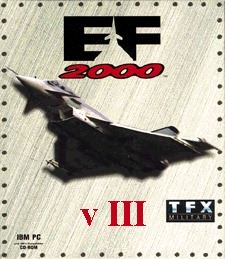| |
July, 1999
I've just purchased and assembled my first multiprocessor system using dual AMD K7 500 MHz processors running under NT 5.0. WOW! I thought this thing was fast on my old Voodoo2 SLI boards, but my Voodoo3 arrived last night and I installed it first thing this morning.

You have to understand a little background here. The bus speed on this system is 200 MHz. Now I know the technonuts know that this is technically not a bus, but in spite of that this 500MHz part is fully 25% faster than a PII 450, for a ton of reasons including the 200MHz bus (based on Digital Alpha's EV6 bus, bandwidth of 2.6 GB/sec). But you may not know that this is the FIRST production CPU using the copper process at .25 microns out of the new Dresden fab plant. It runs cool, lean and mean!
Now adding the Voodoo3 to this mix is sheer delight. The V3 part is more than twice as powerful as Voodoo2 SLI (according to 3dfx own Steve Schick), and is running in my AGP slot at 4x. The total pixel pushing under NT5 is unbelievable. Running Falcon 4.0 1.2 at 1024x768 in the campaign I have yet to see my frame rate dip below 25 fps, and that is with bubble at 3 and graphics options cranked, and volumetric clouds turned ON.
I do have a few special features on this board. Each CPU has 256K L1 cache onboard (2x the PII cache), and each has access to a 512K L2 cache without tag RAM, and up to 8 MEG of L2 cache with tag RAM chips. The cache on my system runs at 250MHz, but can be adjusted up to full processor speed with faster cache.
Don't forget that under DX7 I am also running with 3DNOW support and a fully pipelined FPU. This thing actually peaks at two instructions per clock. Yikes! 3DNOW is AMD's enhanced instruction set, more or less equivalent to an FPU MMX.
3DNow provides SIMD (Single Instruction, Multiple Data) replacements for common FPU instructions. Since this is essentially the math needed for 3d games to perform transformations, it's the ultimate FPU enhancement.
Click to continue
. . .
|
|

Okay, so I am somewhere in the order of 3500 MIPS, but that Voodoo3 is also in the picture. It's a hot part, at least as hot as the TNT II, which also hit the market last week. The introduction of Intels new i980 should be interesting, however, since that board has 32 meg of onboard SGRam.
In the meantime, dual processors have become the ultimate gamers edge. With Fighter Duel II and Falcon 4.0 already here, and other coming games also adding multi-threading, and with NT 5 now with DX7 support, there is a huge speed gain
to be had by using dual CPUs.
The bump mapping in Falcon 4 1.2 is incredible, and suddenly low level flight feels very fast and scary. The terrain detail must be about 4x higher than the first release, and combined with the new clouds I can only wish that I could fly the Comanche Gunship in this one!
Too bad Voodoo 3 isn't 32 bits... =(
Back to the Future
The technical specs found here regarding CPUs are fact, not fiction. Even the relative performance of the K7 is mostly fact. Engineering samples are showing a 20% speed increase over the Pentium II, but this does not take into account the 3DNOW features of the chip, and maximum performance will be seen in games, not business applications.
I don't know if bump mapping will make it into Falcon 4 this spring, but I do know that volumetric clouds will show up sometime soon. And if bump mapping doesn't show in F4, it will show soon in some other sim like EF2000 v.3.
The AMD K6-2 arrived last year, and the K6-3 will hit the streets in February. A generation beyond the K6, the AMD K7 may be your story in the summer of 1999. The K7 is the first AMD part that will be configurable with dual processors, and it is likely to redefine the meaning of "screaming" speed under NT 5. By the way, this new CPU will also use a new proprietary "Slot A," that is similar to Intel's Slot 1.
Since late spring and early summer will also see the arrival of hot new 3d boards with chips like the Glaze3d and Voodoo3, it should prove to be a hotter than usual summer!
|
|